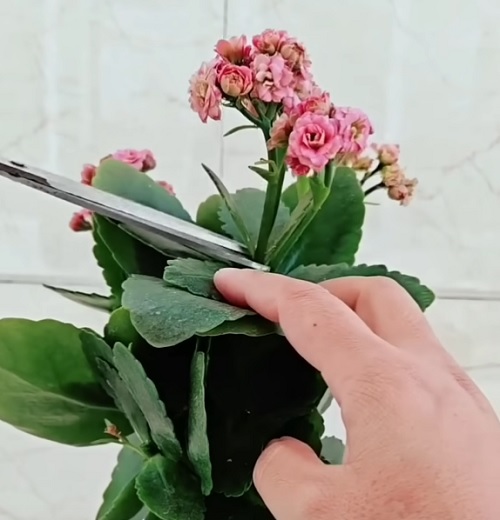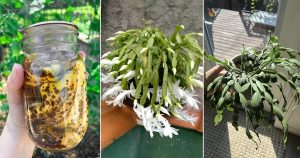Is Your flaming Katy getting a little wild or leggy? Here’s how to prune Kalanchoe for a fuller, bushier appearance.
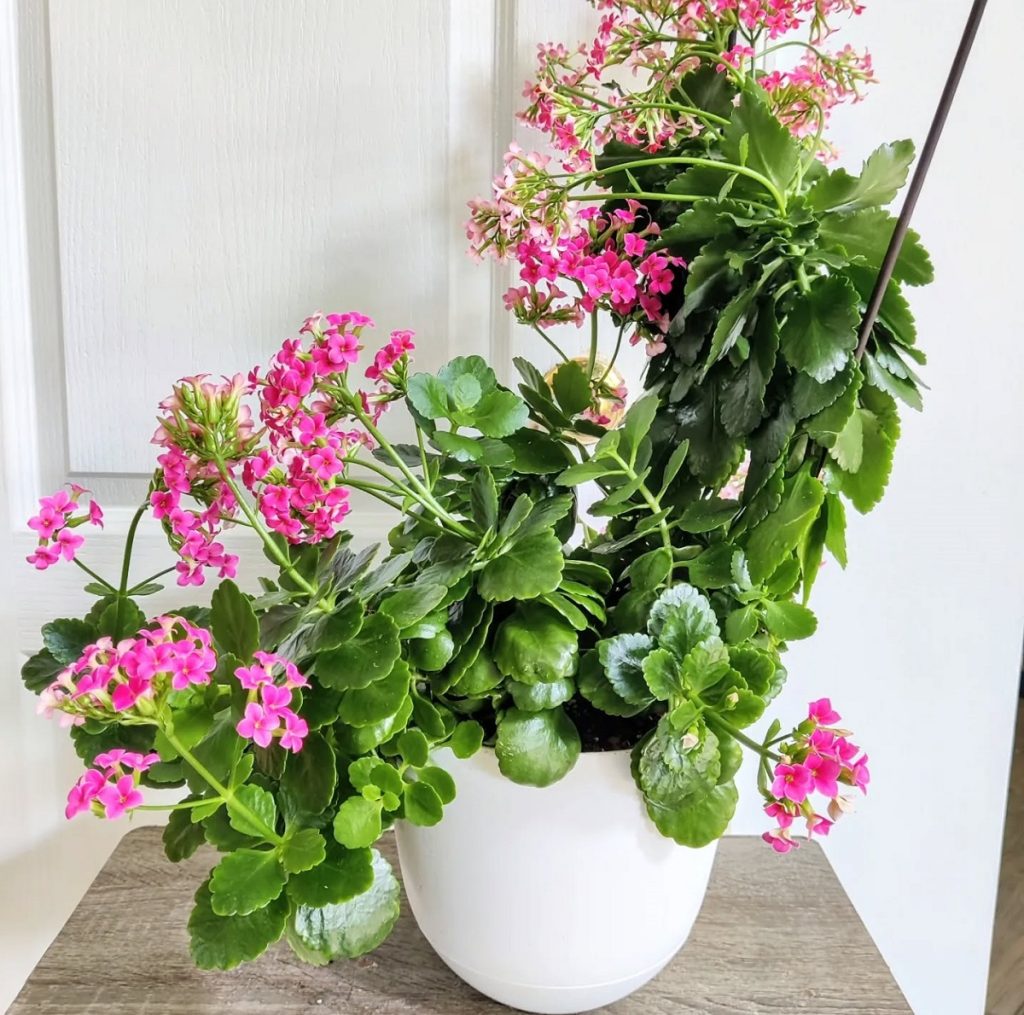
These delightful plants with fleshy leaves and colorful blooms are loved for good reason—they’ll thrive just about anywhere! But even the toughest beauties need a bit of TLC. Without proper care, Kalanchoe can start to look leggy. Let’s talk about how to prune it so it stays compact and lush.
Some Information About Kalanchoe
Before we jump right into the whats and hows of pruning a Kalanchoe, let us get to know the plant a bit more. Known for their tiny flowers and scallop-edged, oval-shaped leaves, there are actually around 100 species in the Kalanchoe genus. The one you’ll most often spot is the cheerful Kalanchoe blossfeldiana, also known as ‘Widow’s Thrill’. It puts on a colorful show with blooms in pink, red, yellow, white, and orange.
The best part about Kalanchoe is its easy-to-care, drought-tolerant nature. Water it every other week, and it will be perfectly happy! In tropical or subtropical climates, it can also be grown as a perennial. But for places with a colder climate, you must grow this plant as a houseplant. Honestly, your collection will look extra beautiful with Kalanchoe in it!
Did you know some species, like Kalanchoe pinnata, have been used in traditional remedies for years? Though not all are medicinal, it’s still pretty neat to know your plant has a little history behind it!
Important Note: Kalanchoe is toxic to pets like cats and dogs if ingested. The plant contains compounds called bufadienolides, which can cause vomiting, diarrhea, and more serious symptoms in animals. So, make sure to keep it out of their reach and call a vet if you suspect they’ve had a nibble.
How to Prune Kalanchoe for a Fuller, Bushier Appearance?
Now that we’re better acquainted with this lovely plant, here’s how you can prune it to keep it looking fresh, healthy, and full.
1. Right After It Flowers
This is pretty much the best time to prune your Kalanchoe for two reasons. For one, after flowering, your Kalanchoe will enter a dormant/ resting phase during March or April. Pruning during this phase will allow your plant to prepare for the next flowering cycle.
Secondly, it also allows your plant to grow “inward”, meaning it will be more compact and bushy as the next growing phase starts!
Be brave and go down about a few inches from the top of the flowering stems to right below a node or the intersection of two branches. This is where you cut with sharp, clean shears. And no, you don’t have to worry; they will eventually grow back! The bonus part is that after pinching off the flowers, you can propagate the clippings too!
Pro tip: Wait until all the blooms have faded before pruning to let your flowers shine their brightest.
2. Remove Dead/ Diseased Parts
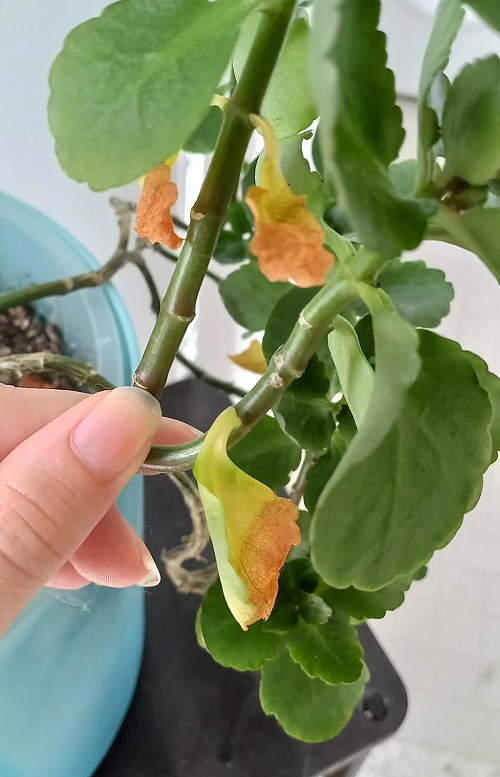
If you have ever noticed your Kalanchoe not putting out new growth, this may be the reason. You have been letting the dying or diseased leaves and stems hang onto your plant for too long. With your plant expending energy on sustaining these plant parts, it obviously cannot produce newer leaves and stems!
An important part of pruning Kalanchoe is to remove all plant parts that are not helping your specimen. Simply twist off any yellowing leaves or weak stems. You don’t even have to use your shears for this step. Quite the win-win!
If your plant had a pest issue recently—like mealybugs or aphids—it’s extra important to cut off any leftover damaged parts. Left untreated, these can slow recovery and affect healthy leaves too.
3. Even Out The Appearance
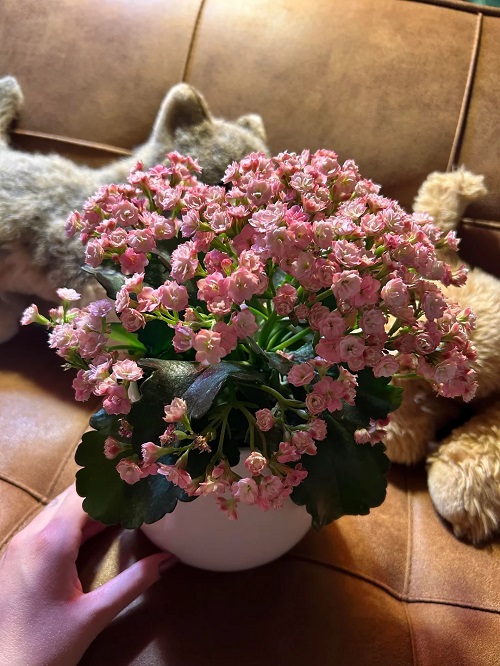
This one’s pretty straightforward. After trimming those leggy, wayward stems, take a good look at your plant from all sides. Give the pot a gentle spin to spot any lopsided growth—usually caused by one side getting more light than the other.
Snip back the overgrown side confidently. Don’t shy away from making bold cuts—your Kalanchoe will bounce back bushier than ever!
4. Hard Pruning Your Plant
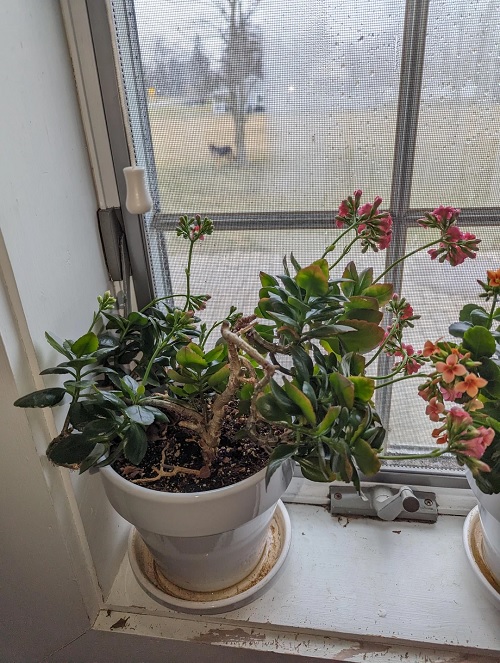
Now this is what we call a serious haircut. But don’t worry—your plant can handle it. Reserve this for when your Kalanchoe is really getting out of hand, with branches growing wild in every direction.
Coming to the “how”—grab your clean, sterilized pruning shears and cut above the first nodes from the base of the stems. If you spot tiny white aerial roots, you can trim them off—but no worries if you don’t. They’re harmless and actually help the plant absorb moisture from the air.
You can reuse the clippings from hard pruning to fill in your pot, but that’s more of a short-term fix. For long-term results, try planting them in new containers instead. That way, you’ll have even more beautiful Kalanchoes to admire!
If your plant looks bare after a hard prune, don’t panic. New growth usually starts popping up in a couple of weeks, especially if the plant gets bright, indirect sunlight. Patience is key here!
And that’s all about how to prune Kalanchoe to make it look full and bushy. Do you have some pruning tricks up your sleeve? Let us know in the comments below!

